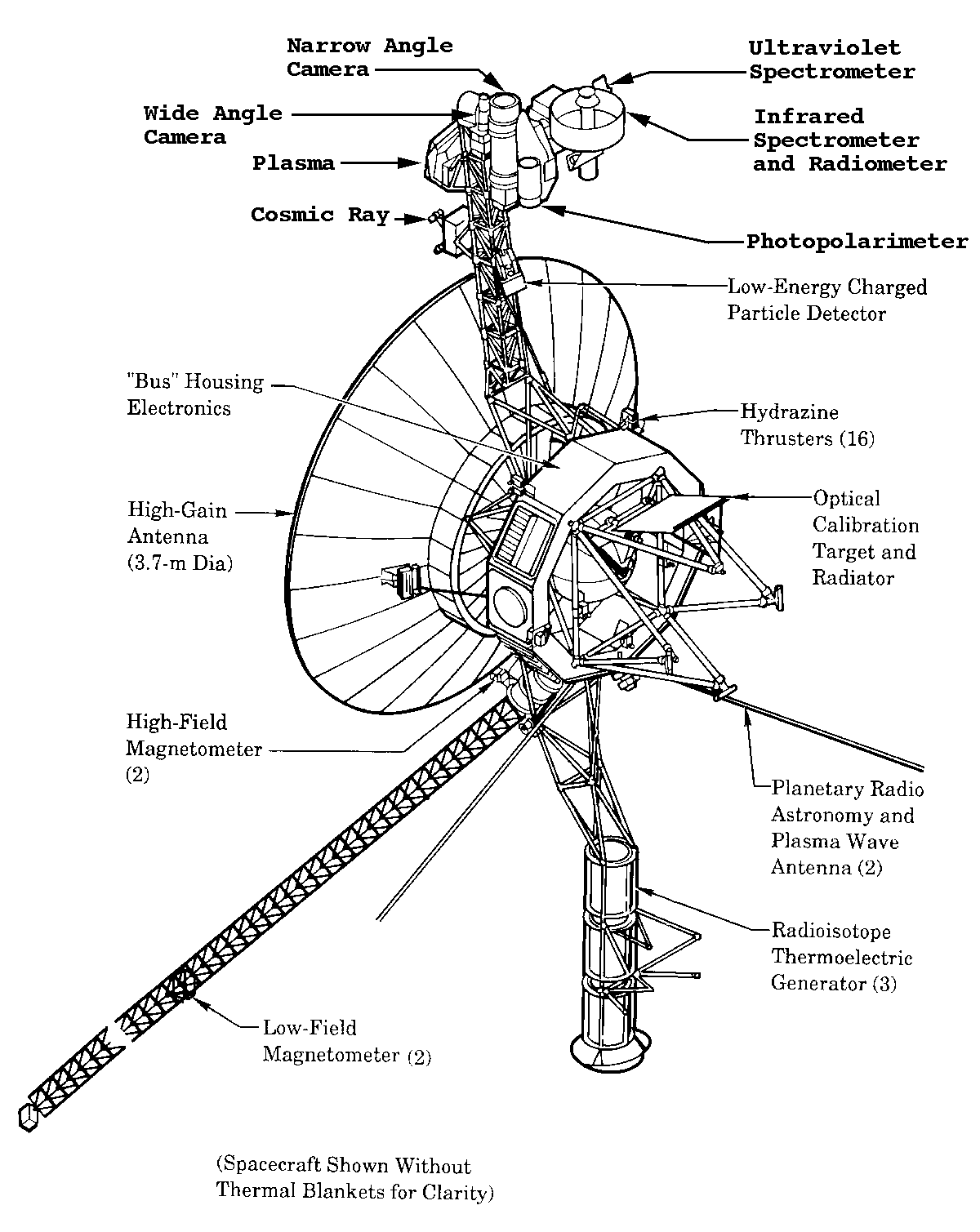Voyager Spacecraft Introduction
The two identical Voyager spacecraft, each with a mass of 815 kilograms, are among the most autonomous, sophisticated robots ever sent to explore other worlds. Each is a self-contained system, carrying its own power, propulsion, communications systems, and science instruments. Communication between the spacecraft and Earth is carried out via a high-gain radio antenna 3.7 meters in diameter that is always oriented toward the Earth. The radio transmitters (there are two complete systems to provide backup in case of failure) have only 23 watts of transmitting power, about the power of a refrigerator light bulb. Yet with the aid of the sensitive receivers of the NASA Deep Space Network of tracking stations, this 23-watt radio can transmit data over a distance of 1 billion kilometers at the enormous rate of 115200 bits per second, almost a hundred times faster than Pioneer. At the greater distance to Saturn, a lower data rate of 44800 bits per second was adopted. In addition, the Voyager spacecraft carried a digital tape recorder with a storage capacity of 500 million bits. The power for each Voyager spacecraft is supplied by three radioisotope thermoelectric generators (RTGs) that produce about 400 watts of electrical power. Each spacecraft is controlled by a set of interconnected electronic brains called the attitude and articulation control subsystem (AACS), the flight data subsystem (FDS) and the computer command subsystem (CCS). Rather than being instructed directly by ground controllers (as were the pioneers), the Voyager control systems accept precoded sets of several thousand instructions that can provide autonomous operation for days or weeks at a time. These systems also include elaborate error detection and correction routines so the spacecraft can locate and correct problems before ground controllers are aware of them. The AACS, FDS, and CCS can be reprogrammed in flight if necessary, allowing great flexibility in responding to changing conditions or science objectives.
For more information, see the Voyager 1 or Voyager 2 INSTRUMENT_HOST catalog file.
 Enlarge figure
Enlarge figure 